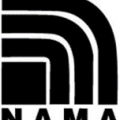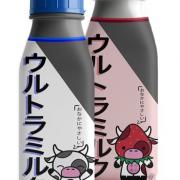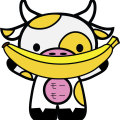Cornhusker Economics May 6, 2020
Nebraska National Agri-Marketing Association and the COVID-19 Effect
The University of Nebraska-Lincoln’s National Agri-Marketing Association (NAMA) student organization is one of more than 30 student chapters across the U.S. and Canada. The objective of the student NAMA on campus is to learn first-hand about the many career opportunities in agri-marketing from professionals in marketing, advertising, communications, promotion, sales, and public relations. As chapter members, students develop valuable personal contacts and working relations with agri-marketing professionals and have meaningful opportunities to  develop and practice their managerial skills and leadership abilities.
develop and practice their managerial skills and leadership abilities.
Nebraska NAMA hosts speakers at monthly meetings, coordinates field trips, conducts fundraisers, has socials, and works with the agri-marketing community. Highlights from this year were lectures from Unanimous Agency (branding, marketing, web design) and an on-site visit with Hudl (sports and technology), and helping with the Nebraska Power Farming Show in December. A select group of students also works throughout the academic year to develop a marketing plan for an agricultural product/commodity or service that is an input for, or output of, an agricultural application for which return to the producer is demonstrated.
Coming off a stellar year at the national NAMA conference in 2019, Nebraska NAMA members were highly motivated to repeat as the outstanding chapter nation-wide and take their best game to the marketing plan and sales competitions in San Diego.
This year Nebraska NAMA decided to market UltraMilk, an ultra-filtered milk product which has concentrated protein and nutrients and is lactose-free. The team made a gutsy decision to market the product internationally which has not been done previously in national competition. Japan was targeted because its citizens value premium quality and are willing to pay higher prices for it. Japan has an unmet need for lactose-free alternatives in a country that loves cheese and dairy but has one of the highest levels of lactose intolerance worldwide. It was a steep learning curve and members found out quickly that marketing at the international level means learning intricacies that are critical to success, such as
- having a product that matches needs, interests, and nutrition and health trends
- packaging that ships well, meets cultural preferences in design, color, size, messaging, and is environmentally friendly

- shipping choices that guarantee that the super-premium product consistently reaches consumers in prime form
- working with agents on the ground in the Japanese trade system
- deciding whether to partner with the U.S. Dairy industry on ads connected with the Olympics scheduled in Japan this summer
- partnering with another company in Japan to create greater ease of entry into the market
- understanding impacts of trade agreements and favored trade status, and
- understanding the importance of contracts and legal documents.
It seemed that the more they learned, the more they realized they needed to learn.
Grace McDonald who created the look for UltraMilk shared what she learned.
 “Starting around the 60-70s, Japanese schoolgirls started developing “kawaii” iconography to express themselves in a strict schooling system. Kawaii is a Japanese term meaning “cute.” Childish handwriting, sweet ways of speaking, pink, frills, lace, large eyes, bunnies, and cats are all aspects of kawaii culture. Kawaii culture became more popular in the 90s and early 2000s. Currently it is a dominant culture for marketing where all ages and sexes respond positively to it. Connotations of color are also different. Black and white used singularly means death. That is why UltraMilk is predominantly gray and white.”
“Starting around the 60-70s, Japanese schoolgirls started developing “kawaii” iconography to express themselves in a strict schooling system. Kawaii is a Japanese term meaning “cute.” Childish handwriting, sweet ways of speaking, pink, frills, lace, large eyes, bunnies, and cats are all aspects of kawaii culture. Kawaii culture became more popular in the 90s and early 2000s. Currently it is a dominant culture for marketing where all ages and sexes respond positively to it. Connotations of color are also different. Black and white used singularly means death. That is why UltraMilk is predominantly gray and white.”
Team members reached out to industry, logging hours of interview time with professionals including shipping and marketing directors with dairy cooperatives and multinational corporations. They met with Japanese students on campus to understand how citizens experience consuming milk and to learn about the dairy industry in Japan. They also connected with professionals who currently work in Japan and with experts in trade and academics to develop an in-depth understanding of important considerations in marketing the product—from milk production at a dairy in Oregon to finding the packaged product in a metro station vending machine in Japan.
Brent Miller, Nebraska NAMA’s vice president/marketing team leader, noted, “What is really amazing is that high-level professionals are so willing to give their time, expertise and insight in the industry to working with college students. We could never have learned all that we did from books or information online.”
COVID-19 reared its ugly head in December with the outbreak in China and some cases in Japan. Little did Nebraska NAMA know the impact it would have on their spring semester and the annual event that is the highlight of the year for members -- The NAMA National Conference. Written marketing plans were due in mid-March. It was decided near that time that the conference scheduled in mid-April in San Diego would be canceled.
The team forged ahead and completed the marketing plan with hopes that they would have a chance to present at a rescheduled conference in the summer—or maybe through Zoom. They wanted to show what they had learned in the countless hours spent learning what it takes to successfully market a product in an international market. The conference has been rescheduled to August, but the marketing competition is not being held. Teams received feedback on their plans, but the experience of presenting and connecting with other students and professionals from across the nation won’t happen in 2020. One bright spot is that Brianna Gable, a freshman member of Nebraska NAMA, was awarded a NAMA scholarship. Moving forward, NAMA members will soon be thinking ahead to next year and ideas for an innovative product for competition in 2021!
The Nebraska NAMA chapter was led by Austin Harthoorn (president), Brent Miller (marketing plan vice president), Alice McDonald (programs vice president), Kaleb Kindler (treasurer), Marydith Donnelly (secretary), Maria Harthoorn (vice president of membership), Grace McDonald (publicity chair), and Jessica Weeder (trip chair).
Keep up with Nebraska NAMA on Twitter @UNL_NAMA on Facebook @NebraskaNAMA and on Instagram @Nebraska_NAMA
Austin Harthoorn
2019-2020 NAMA President
Department of Agricultural
University of Nebraska-Lincoln
Rosalee Swartz
NAMA Advisor
Department of Agricultural Economics
University of Nebraska-Lincoln
rswartz1@unl.edu